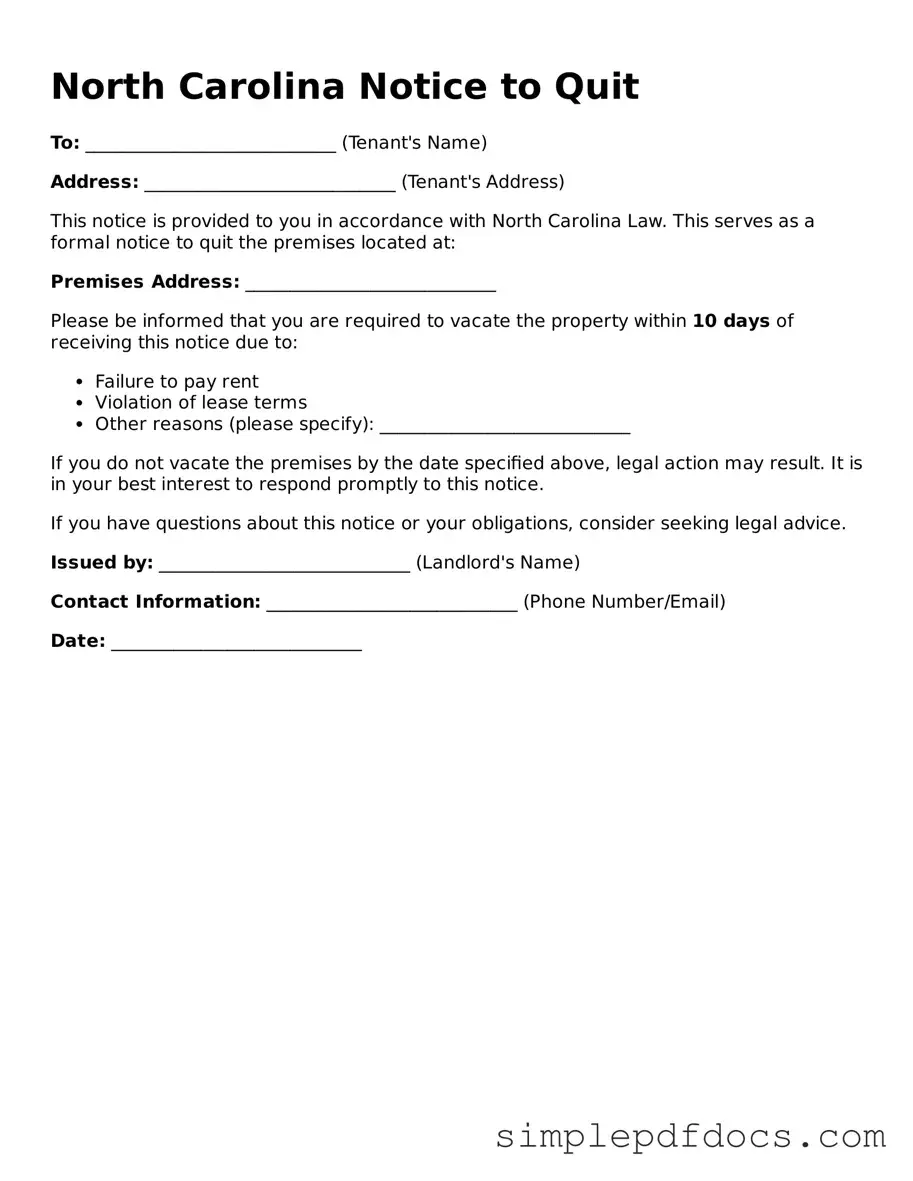In North Carolina, the Notice to Quit form plays a crucial role in the landlord-tenant relationship, serving as a formal communication tool that initiates the process of eviction. This document is typically issued when a tenant has violated the terms of their lease agreement, whether due to non-payment of rent or other breaches. The form outlines the specific reasons for the eviction and provides the tenant with a clear timeline to vacate the premises. It's important to note that the Notice to Quit must be delivered in accordance with state laws, ensuring that tenants are given proper notice and an opportunity to rectify the situation. Understanding the nuances of this form can empower both landlords and tenants to navigate the often complex and emotional landscape of rental agreements. By adhering to the guidelines set forth in the Notice to Quit, landlords can protect their rights while also respecting the legal protections afforded to tenants, fostering a more transparent and fair rental environment.
